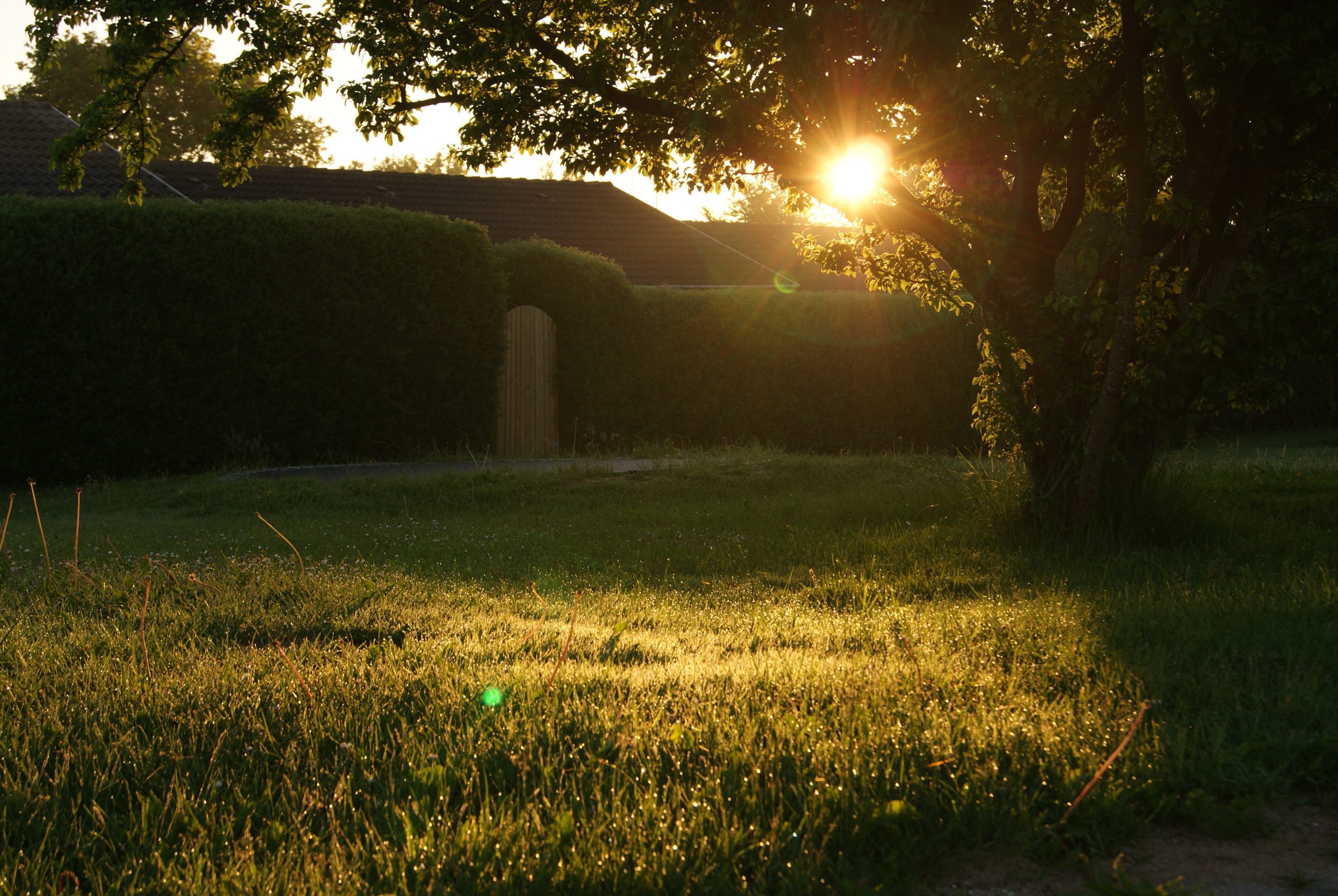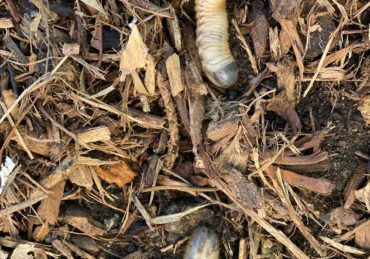In 2025, stump grinding costs typically range from $120 to $400 per stump, with larger stumps possibly reaching up to $800. The price is usually determined by the stump’s diameter, averaging between $2 and $5 per inch. Smaller stumps may cost as little as $40, while large stumps can run between $200 and $417. Additional factors, such as accessibility, terrain, and hardwood species, can also influence overall costs. Discounts for multiple stumps are often available. For an extensive look at saving strategies and additional expenses, further exploration will reveal valuable insights.
Average Cost of Stump Grinding in 2025
In 2025, the average cost of stump grinding ranges from $120 to $400 per stump, influenced by factors such as size, tree type, and site accessibility. Larger stumps can escalate costs considerably, with some reaching up to $800. Understanding these variables is essential for homeowners to accurately estimate their expenses for stump removal services.
National Average and Price Range
The national average cost for stump grinding in 2025 ranges from $150 to $550, with a typical payment of approximately $350. Stump grinding costs vary based on several factors, including stump size and accessibility. Homeowners can expect to pay between $120 to $400 per stump, with additional stumps costing an extra $30 to $60 each. Prices are typically calculated at $2 to $5 per diameter inch, which means larger stumps, particularly those over 30 inches, will incur higher fees. The initial grinding cost for the first stump is around $123, while subsequent stumps tend to benefit from reduced pricing due to operational efficiencies. Understanding the national average and price range helps homeowners budget effectively for their stump grinding needs.
Factors Influencing Stump Grinding Cost
Several key factors influence the cost of stump grinding, impacting the final price homeowners can expect to pay in 2025. The average stump grinding cost typically ranges from $120 to $400 per stump, with pricing largely determined by stump size. For instance, costs generally average $2 to $5 per diameter inch, meaning larger stumps incur higher fees due to increased labor and equipment needs. Moreover, hardwood trees, such as oak and maple, can add $50 to $150 to grinding fees, as they require specialized equipment. Homeowners should also consider the costs for additional stumps, which can range from $30 to $60 each, along with potential labor increases due to accessibility challenges in certain locations.
Cost to Grind a Stump by Size and Diameter
The cost of stump grinding varies markedly based on the size and diameter of the stump. Small stumps, measuring up to 10 inches, typically incur lower costs, while larger stumps, exceeding 30 inches, can lead to substantially higher expenses. Understanding the pricing structure based on stump size is vital for homeowners planning this service.
Stump Grinding Cost per Inch
Average costs for stump grinding typically range from $2 to $5 per inch of diameter, influenced by factors such as stump size and type. For small stumps, measuring up to 10 inches, the average cost is between $40 and $75. Medium stumps, ranging from 10 to 30 inches, generally incur costs from $75 to $150. In contrast, large stumps over 30 inches can cost between $200 and $417, depending on the complexity of the root system and accessibility. Furthermore, hardwood stumps may attract extra costs of $50 to $150 due to increased labor requirements. Homeowners should also consider potential discounts for multiple stumps, which can lower the overall cost per inch.
Small vs. Large Stumps
When comparing the cost to grind small versus large stumps, significant differences arise due to factors such as size, complexity, and accessibility. Small stumps, typically up to 10 inches in diameter, generally incur stump grinding costs ranging from $40 to $75. In contrast, large stumps exceeding 30 inches can average between $200 and $417, reflecting the increased time and effort required for grinding. The cost per diameter inch for stump grinding ranges from $2 to $6, meaning larger stumps lead to higher overall expenses due to their circumference. Moreover, accessibility issues can further escalate costs, particularly for large stumps that may require specialized equipment or extra labor, making it essential to assess the specific situation before budgeting for stump removal.
Additional Factors That Affect Stump Grinding Costs
Several extra factors can greatly impact the cost of stump grinding beyond size and diameter. Accessibility and terrain conditions may require specialized equipment or increased labor time, while the type of tree and its root complexity can further influence pricing. Furthermore, local regulations and the need for permits can introduce unexpected expenses, making it essential for homeowners to take these elements into account when budgeting for stump removal.
Accessibility and Terrain
The accessibility of a stump plays an essential role in determining the overall cost of grinding, as challenging locations often necessitate extra labor and specialized equipment. Stumps situated in tight spaces or on steep slopes can lead to increased labor costs, potentially by an extra $50 per hour. When stumps are obstructed by vegetation or structures, professionals may need to clear the area beforehand, further raising expenses. Furthermore, the terrain type—whether rocky or uneven—can complicate the grinding process, resulting in longer job durations and higher fees. Homeowners should also be aware that travel distance from the service provider may incur additional charges, ranging from $50 to $200, particularly for remote locations.
Tree Type and Root Complexity
Accessibility challenges are not the only factors influencing stump grinding costs; the type of tree and the complexity of its root system also play significant roles in determining the final price. Generally, hardwood stumps, such as oak and walnut, incur higher costs due to their toughness and the wear on equipment. Furthermore, root systems that are extensive and convoluted add to the labor and time required, further driving up expenses.
| Tree Type | Cost Increase | Root Complexity Cost |
|---|---|---|
| Softwood | Base Price | $2-$4 per inch |
| Hardwood | $50-$150 extra | $2-$4 per inch |
| Older Stumps | Lower Cost | Easier to grind |
| Healthy Stumps | Higher Cost | More labor required |
Permits and Local Regulations
Understanding the potential need for permits and adherence to local regulations is vital, as these factors can greatly influence the overall cost of stump grinding services. Some municipalities require permits, which can add a permits cost ranging from $60 to $320. This necessity often stems from concerns over underground utilities and guaranteeing compliance with safety standards. In addition, homeowners associations may impose specific guidelines regarding stump removal, further affecting the required permits and associated costs. Failure to obtain the necessary permits can result in fines or complications that may escalate long-term expenses. As a result, it is important for homeowners to research local regulations before proceeding with stump grinding to avoid unexpected costs and facilitate a smooth process.
Additional Costs to Consider
When considering stump grinding, homeowners should be aware of potential additional costs that may arise. These can include fees for root removal and debris disposal, as well as expenses related to sodding and landscaping after the grinding process. Understanding these factors will help facilitate a clearer budget for the overall project.
Root and Debris Removal
Considering root and debris removal is essential, as these extra services can considerably increase the overall cost of stump grinding. Root removal costs can range from $300 to $800, influenced by the size and complexity of the root system. Moreover, stump grinding generates wood chip debris, and while some companies may include debris disposal in their initial quotes, others will charge extra for this service. As a result, homeowners should be aware that costs depend on the specific service provider and the extent of debris generated. In addition, if deeper grinding is required, this may also raise overall expenses due to increased labor and equipment usage. Understanding these factors will help homeowners budget more accurately for their stump grinding projects.
Sodding and Landscaping After Stump Grinding
After stump grinding, homeowners often face additional costs related to sodding and landscaping, as the area requires careful restoration to guarantee an attractive and functional outdoor space. Laying sod typically ranges from $1 to $2 per square foot, depending on the area needing coverage. It is essential to fill the hole left by grinding, which may incur extra costs for topsoil or fill dirt. Landscaping efforts may involve replanting or redesigning the space, with costs varying based on plant selection and complexity. Utilizing the wood chips generated from the grinding process can help mitigate some expenses, serving as mulch to retain moisture and suppress weeds. Homeowners should also monitor any remaining roots that could complicate future landscaping plans.
DIY Stump Grinding vs. Hiring a Professional
When considering stump grinding, homeowners face the decision between renting a stump grinder for a DIY approach or hiring a professional service. While renting a grinder may seem cost-effective, the associated risks and challenges, including safety concerns and potential property damage, must be carefully evaluated. Ultimately, weighing the initial rental costs against the efficiency and expertise of professionals can greatly impact the overall outcome and expense of the project.
Cost to Rent a Stump Grinder
Renting a stump grinder can be a cost-effective option for homeowners tackling a single stump, but the expenses can escalate quickly if multiple days or additional stumps are involved. The cost to rent a stump grinder typically ranges from $150 to $300 per day, which can add up considerably for larger or multiple stumps. In contrast, professional stump grinding services generally charge between $200 and $500 per stump, offering expertise that can save time and reduce safety risks. While the average costs of renting might seem lower initially, the labor intensity and potential for additional expenses can make hiring a professional more economical in the long run, especially for complex or larger projects.
Risks and Challenges of DIY Stump Grinding
While renting a stump grinder may seem like a straightforward solution, the risks and challenges associated with DIY stump grinding can greatly impact both safety and effectiveness. Operating a stump grinder requires skill and knowledge; improper use can result in significant safety risks, including injuries or property damage. Moreover, the time commitment for DIY projects can be substantial, as complex stumps may take hours to grind, whereas professional services typically complete the task more efficiently. In addition, professionals possess the expertise to navigate unexpected challenges, such as intricate root systems or difficult access. Ultimately, while DIY methods might seem cost-effective, they often lack the thoroughness and safety measures provided by professional services, increasing the likelihood of incomplete stump removal and future regrowth issues.
Tips to Save on Stump Grinding Costs
To effectively reduce stump grinding costs, homeowners should consider bundling this service with tree removal for potential savings. Furthermore, scheduling the work during off-peak seasons, such as winter, can lead to lower rates due to decreased demand. These strategies can greatly enhance cost efficiency while ensuring proper stump removal.
Bundle Stump Grinding with Tree Removal
Bundling stump grinding with tree removal can lead to substantial savings, as many service providers offer discounts that reduce costs remarkably on the stump grinding portion. Homeowners may find that the average stump grinding price ranges from $120 to $400, while tree removal can add between $385 and $1,070. By opting for bundled services, it’s common to see savings of 10% to 25% on stump grinding costs. Scheduling stump grinding immediately after tree removal also minimizes logistics fees, potentially saving an additional $50 to $200. Additionally, planning to remove additional stumps during tree removal can yield further savings, with costs around $30 to $60 for each extra stump when bundled, enhancing overall cost-effectiveness.
Schedule During Winter or Off-Peak Seasons
Scheduling stump grinding services during winter or off-peak seasons can yield significant cost savings, as many providers are keen to fill their schedules during these quieter times. Homeowners can take advantage of lower stump grinding prices, potentially saving between 10% to 25% on costs. During these off-peak periods, many companies offer discounts or package deals for multiple stumps, enhancing overall savings. Moreover, booking during winter not only provides access to reduced rates but also increases the likelihood of securing a preferred service date due to higher availability. Consequently, planning stump grinding during these times is a strategic approach to save money while ensuring efficient service.
Frequently Asked Questions
How to Estimate Cost for Stump Grinding?
Estimating the cost of stump grinding involves evaluating stump size, type, and accessibility. Consider local labor rates, potential permit requirements, and additional charges for multiple stumps or debris removal to accurately determine overall expenses.
Why Is Stump Grinding so Expensive?
Stump grinding expenses are primarily attributed to labor intensity, specialized equipment, and factors such as stump size, wood type, and accessibility challenges. These elements collectively contribute to the overall cost of the grinding process.
How Long Does It Take to Grind a 24 Inch Stump?
Grinding a 24-inch stump can feel like a battle with nature, taking approximately 1 to 2 hours. Factors such as wood type and accessibility influence this duration, demanding skilled attention for ideal results.
Is It Cheaper to Grind or Remove a Stump?
When considering stump elimination, grinding is generally more cost-effective than full removal. Grinding typically incurs lower expenses due to reduced labor and equipment requirements, making it a preferred choice for homeowners seeking efficient stump management.




